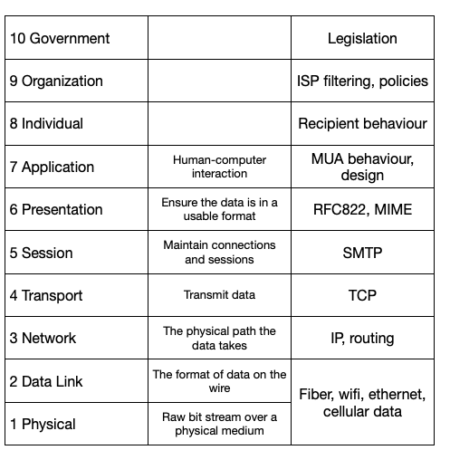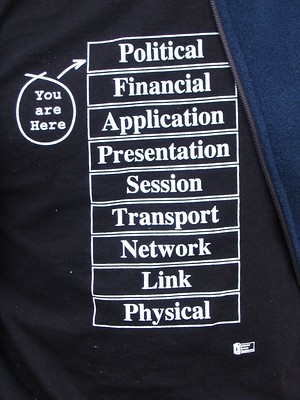The OSI Seven Layer Model
In the 1970s, while the early drafts of the Internet were being developed, a competing model for networking was being put together by the ISO (International Organization for Standardization).
The OSI (Open Systems Interconnection) Model broke the work needed to implement a distributed network service into seven separate layers of abstraction, from the physical infrastructure at layer one all the way up to the application at layer seven. That was much more elegant and academically satisfying than the Internet’s TCP/IP, which was considered a bit ad-hoc in comparison.
It turns out that implementing a network often requires crossing the layers, so the seven layer model wasn’t a great basis for actually building a network on and the simpler TCP/IP four layer model won out.
Why do we care about an old, theoretical network model? Because even though it’s not really used in implementations it’s still an important part of the language engineers use to discuss networks. You need to be aware of it to understand references to “level 3” and “level 8” problems.
I’ve included rough mappings from bits of the email world onto each layer in this handy table:

That’s ten layers, not seven, you say. Yes, yes it is.
There’s always more to networking than just getting data in front of a user. There’ve been joking (not-joking) references to the “political” and even “religious” layers at the top of the stack. This shirt is one of the more notorious ones.

The three extra layers I gave above – individual, organization, government – are often useful abstractions, and are particularly relevant to email deliverability.
A “full stack” email expert needs to be intimately familiar with levels five through nine, and some situation will require more than a passing understanding of levels three, four and ten.